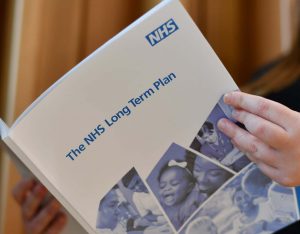BLOG - Success of the NHS Long Term Plan: Integration and collaboration
25 June 2019
GGI Director of Development, Mark Butler, reflects on some of the challenges confronting Boards and suggests steps that they could adopt to foster more effective partnerships and better integration.
The challenges facing the NHS are as well documented as they are daunting. Healthcare needs are evolving and growing in complexity. And medical advances are saving more lives every year but at a significant financial cost.
More broadly, a sluggish recovery from the 2008/09 crash – slower than from any previous recession – and the enormous pressure this puts on public services such as social care and housing, only adds to the problem.
To help meet these complex challenges, ways of working must evolve.
One of the most important changes that needs to happen is in how we collaborate – both among organisations within the NHS and with partner groups such as local authorities, the third sector and other stakeholders.
Long-term thinking
The need for smarter collaboration is identified as a key area in the NHS Long Term Plan, published in January 2019, which focuses on the importance of integrated care – coordinating services around people’s needs. Properly executed, this integrated model results in more joined-up care, better anticipation of healthcare needs, and an increase in the personal control people take over their own health. It also leads to better knowledge sharing. But even as this kind of integrated care helps to address existing challenges, it also creates new ones.
For an institution that, since 1991 and the introduction of the purchaser-provider split, has emphasised competition as the main engine of progress, adapting to partnership working can be a difficult cultural leap. On a more practical level, bringing together different groups is hard to do harmoniously when there are significant differences between priorities, cultures, ways of working and geographical boundaries. For leaders, additional tension exists between the responsibilities they have within their own organisations and those shared across the wider collective.

Building better partnerships
There’s more for board members to consider. For mature partnership collaboration to flourish, there must be public involvement, common purpose, and shared values. But these inter-institutional relationships are often underdeveloped and need to be rapidly matured and deepened. But all of this doesn’t mean it’s not possible. There are steps organisations can take to foster more effective partnerships.
These include:
- developing a consistent narrative across organisations that promotes integration – and communicating it effectively
- embracing a distributed leadership approach that empowers staff to work collaboratively and take decisions
- reflecting on the learning from previous NHS initiatives such as buddying, and also the lessons from international approaches • sharing best practice
- embracing technology and data as a means of driving integration
- aligning back-office functions and governance arrangements, where appropriate
Boards should also make sure they’re utilising the full extent of the network available to them as they embrace system working. This means mapping stakeholders – including the networks of their non-executive directors – and actively developing relationships.
Integrated system working is not an easy option. But for boards that can manage ambiguity and remain authentic and flexible; for those prepared to listen and spend time focusing on behaviours, culture and staff wellbeing; for those ready to build strong relationships and support them with strong governance, the rewards can be significant.
